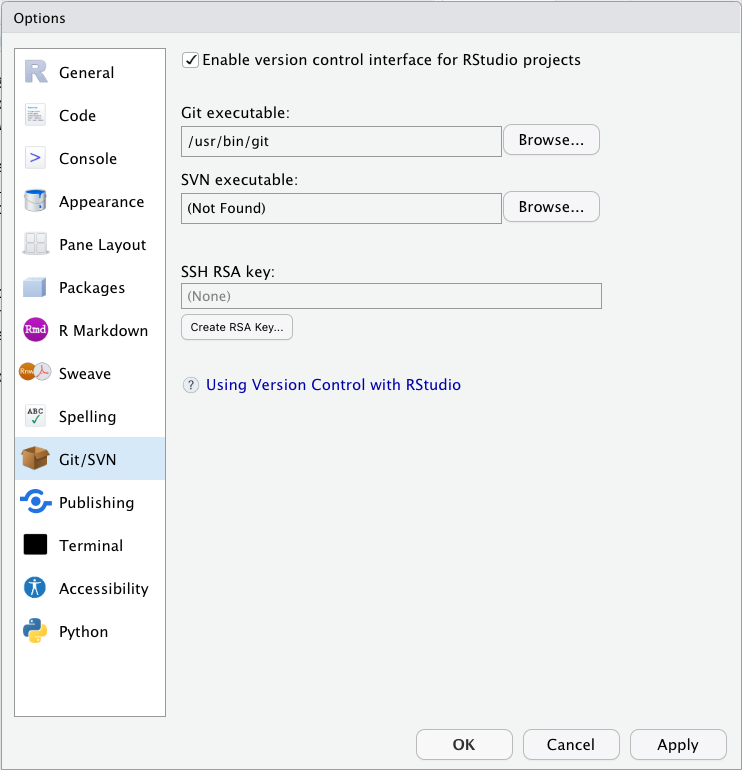

This tutorial will guide you the simple way to deal with these problems.

Interested in international trials? Take part in GlobalSurg.Have you ever confused with several versions of your draft files? Or maybe you have been wasting time to marge your files with others. Enter: git config :ewenharrison/test.git

In RStudio, again click Tools -> Shell …. Change the project directory name if necessary. In Clone Git Repository, enter the GitHub repository URL as per below. Clone an existing GitHub project to new RStudio project Remember, after each Commit, you have to Push to GitHub, this doesn’t happen automatically. The Pull Push buttons in RStudio will now also work. You have now pushed your commit to GitHub, and should be able to see your files in your GitHub account. In GitHub, create a New repository, called here test. Now you want to push the contents of this commit to GitHub, so it is also backed-up off site and available to collaborators. In the future you may wish to create branches to organise your work and help when collaborating. You have now committed the current version of this file to your repository on your computer/server. Now click Commit and enter an identifying message in Commit message. Now in RStudio, create a new script which you will add to your repository.Īfter saving your new script (test.R), it should appear in the Git tab on the Environment / history panel.Ĭlick the file you wish to add, and the status should turn to a green ‘A’. Name the project and check Create a git repository. Git config -global user.name "ewenharrison" This is distinct to GitHub, which is the repository website. Remember Git is a piece of software running on your own computer. Paste in the public key you have copied from RStudio.

Open your account settings and click the SSH keys tab. If you haven’t already, create a GitHub account. C:/Program Files (x86)/Git/bin/git.exe).Ĭlick, View public key, and copy the displayed public key. This is particularly important in Windows where it may not default correctly (e.g. Ensure the path to the Git executable is correct. In RStudio, Tools -> Global Options, select Git//SVN tab. In RStudio, Tools -> Version Control, select Git. Setup Git on RStudio and Associate with GitHub Git or similar needs to be installed first, which is straight forward to do. This example is done on RStudio Server, but the same procedure can be used for RStudio desktop. I was always forget how to set up a repository, so here’s a reminder. RStudio works really well with Git, an open source open source distributed version control system, and GitHub, a web-based Git repository hosting service. It allows backup of scripts and easy collaboration on complex projects. Version control has become essential for me keeping track of projects, as well as collaborating.


 0 kommentar(er)
0 kommentar(er)
